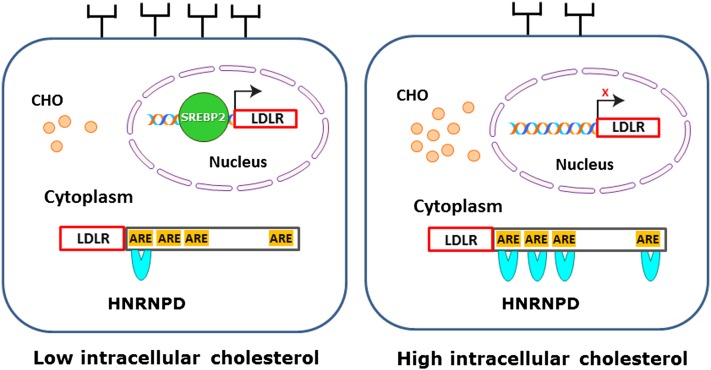Fig. 6.
A model for the two-tier regulation of hepatocyte LDLR expression by intracellular cholesterol (CHO). When the intracellular cholesterol level is low, mature SREBP2 is translocated to nucleus where it binds the SRE-1 site of the LDLR promoter and stimulates gene transcription, while ARE sites in 3′UTR are minimally occupied due to the low cellular abundance of HNRNPD, leading to mRNA stabilization. These dual effects result in more LDLR proteins reaching the hepatocyte surface. Conversely, when dietary cholesterol accumulates in the liver, the increased expression of HNRNPD in cytoplasm accelerates LDLR mRNA degradation by binding to multiple ARE sites in 3’UTR, and in nucleus SRE-1 site of LDLR promoter is not occupied by SREBP2, leading to a blockage of LDLR gene transcription. The fall in transcription rate combined with enhanced decay of mRNA ensures a reduced amount of LDLR reaching to the hepatocyte surface.

